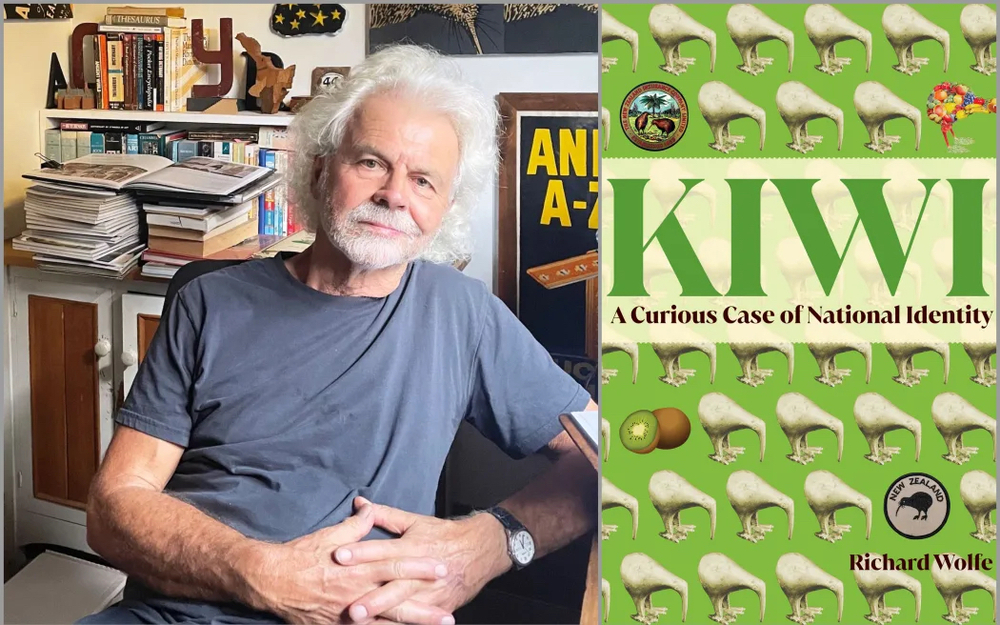Richard Wolfe on how New Zealanders became known as 'Kiwis'
RNZ
16 November 2024, 4:30 PM
 (file image) Photo: 123rf
(file image) Photo: 123rfCultural historian Richard Wolfe explores the trajectory of the kiwi bird becoming one of New Zealand's national symbols and a part of its identity in his latest book.
In Kiwi: A Curious Case of National Identity, Wolfe writes about how companies adopted the name and image of the flightless bird and its popular association with New Zealand soldiers during World War I.
Even prior to European settlers arriving, the feathers of the bird - also known as te manu huna a Tāne or the hidden bird of the god of forest Tāne - were highly sought after for prestigious cloaks (kahu kiwi).
Some of the other earliest adaptations came in the 1850s, when an insurance company used the bird as part of their logo, and the Bank of New Zealand's imagery was associated with the bird early on too, Wolfe told Nine to Noon.
"The kiwi, along with many other examples of our flora and fauna and Māori culture, with varying degrees of cultural insensitivity, were used for trademarks and symbols for companies and for various organisations.
"The big thing that really gave the kiwi a sort of boost in terms of it being accepted as a national symbol and aligning itself or being adopted by New Zealanders, was the invention by an Australian [William Ramsay] of kiwi boot polish . . . when he came to giving it a name, he
decided to honour his wife's homeland.
"Kiwi being a short, sharp, sort of easily remembered name and the image of the bird, a sort of nice round image, suited a round tin admirably."
The product, which was launched in Melbourne in the early 1900s, went on to become popular abroad too, as the British government bought it in bulk for use by the army during World War I, he says.
"So the tins then became scattered around the battlefields of Europe and the connection was made with New Zealand soldiers over there, and so by the time they came back to New Zealand post-war, the connection had sort of been made.
"Prior to that, New Zealanders, like Australians, soldiers were referred to as diggers, but at least calling them Kiwi gave them a rather separate identity."

Photo: Supplied: Oratia Books
Near the end of WWI and whilst stationed at Sling Camp in southern England, New Zealand soldiers became frustrated while waiting for transportation home and preoccupied themselves by drawing a kiwi outline on the side of the chalk hill overlooking their camp, Wolfe says.
"This bird became a local landmark. So, I think that sort of helped cement the association between the soldiers and the bird.
"But interestingly, during the Second World War, the kiwi had to be covered over, because it was seen as a bit of a landmark that Germans coming across the channel would keep an eye out for it and know where they were."
The landmark is still visible and was initially being cared for by the same company that invented the kiwi shoe polish, he says.
But the bird's emergence as a symbol of the country could be dated back even further to the early 1900s, with several cartoons depicting the All Blacks team as a kiwi.
Wolfe believes one of the factors that boosted the kiwi as a national emblem was that it was unofficial.
"New Zealand's national symbols are the silver fern, which is on the national coat of arms, and the Southern Cross … which is on the national flag.
"But the kiwi doesn't have that sort of official endorsement, although it's on coats of arms of various cities and burrows … but it's very much a bird of the people, and I think the fact it has not had that official endorsement has helped its rise and acceptance by New Zealanders at large."
Wolfe says concerns about "the most unlike bird of birds" being the national symbol were overcome thanks to its special traits and apparent ingenuity, which New Zealanders have been likened to.





